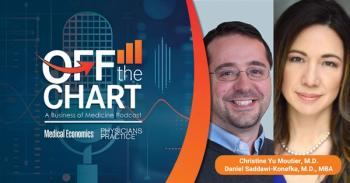
Building a Diverse Workforce for a Healthier Future
There are a lack of minorities represented in healthcare professions. Action must be taken to address this issue.
When I think of diversity from the aspect of healthcare delivery, I think of it as reflecting the balance between the healthcare workforce and the patients that it serves. Diversity across the healthcare spectrum is critically important to ensuring we can better represent and better serve the needs of our patients.
The American Medical Student Association (AMSA) reports that while 26 percent of the American population is Black or African American, Native American or Latino, only 6 percent of practicing physicians are of the same racial or ethnic background.
According to AMSA, part of the problem is a
The situation is not much better in the physician assistant (PA) population. According to data from the
The issue of diversity goes well beyond race and ethnicity - although, new data from the
So, what can we do? There are no easy answers. From my perspective, there are a number of things that will ensure a diverse workforce in coming years.
1. We need to continue outreach to potential medical students in all communities. One thing that PAs have led is called
Higher education in medicine has two components. Opportunity (or the means and resources to achieve success), and Possibility (the awareness of a profession like medicine presented in a manner to make young underrepresented minorities aspire to reach beyond what them may seem are overwhelming obstacles to a graduate level education).
2. To recruit more students from diverse backgrounds, we must also enable them to succeed in their education, recognizing that a diverse workforce is essential to improving healthcare delivery. The
Additionally, the
3. We need to focus on underrepresented minorities in faculty recruitment also. The student population needs mentors and role models from their neighborhoods and communities among their faculty to reflect their life experience and to see directly the picture of success.
4. Community providers and faculty in medical education programs need continual diversity education to improve understanding and awareness of complex diverse communities and diversity issues that they will confront throughout their professional life times. The AAMC has several free resources on
This is a challenging problem affecting all levels of the medical educational system. I've been a PA for 34 years and progress in this area seems slow. It is my hope that the more aware we are regarding diversity issues throughout our healthcare system, the more we can do to create a system that better serves our patients who rely on us. These first steps are worth taking and necessary on the journey of addressing diversity issues.
Newsletter
Optimize your practice with the Physicians Practice newsletter, offering management pearls, leadership tips, and business strategies tailored for practice administrators and physicians of any specialty.








